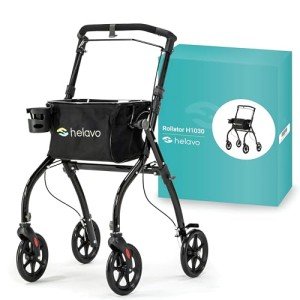The Comprehensive Guide to Adjustable Walkers: Enhance Mobility and Independence
Adjustable walkers have increasingly end up being an integral part of mobility help, providing support and self-confidence to individuals dealing with challenges in movement. They deal with a wide variety of users, from seniors recovering from injury to people with mobility disabilities. In this article, we will explore the features, benefits, factors to consider, and maintenance of adjustable walkers, boosting understanding and helping with notified choices.
What Is an Adjustable Walker?
An adjustable walker is a mobility aid created to provide support and assistance to individuals who are recuperating from surgical treatment, struggling with persistent conditions, or experiencing problems with balance and stability. Unlike standard walkers, adjustable walkers use personalized height settings, guaranteeing a better suitable for users of different heights and preferences. This adaptability makes them perfect for a diverse range of people.
Table 1: Key Features of Adjustable Walkers
| Feature | Description |
|---|---|
| Height Adjustment | Walkers can be gotten used to different heights for optimum comfort and support. |
| Foldability | Lots of adjustable walkers can be quickly folded for practical storage and transport. |
| Lightweight Materials | A lot of models are made from lightweight yet strong materials for convenience. |
| Ergonomically Designed Grips | Handles are contoured for a comfortable grip, reducing stress on hands. |
| Durable Wheel Options | Some designs use wheels for boosted mobility over various surface areas. |
| Devices Availability | Optional devices like baskets and trays that add functionality. |
Benefits of Using an Adjustable Walker
- Personalized Fit: The primary benefit of an adjustable walker is the capability to tailor it to the user's height, promoting better posture and minimizing stress on the back and joints.
- Enhanced Stability: They offer significant support, permitting users to preserve balance while walking, therefore minimizing the danger of falls.
- Mobility Independence: With adjustable walkers, individuals typically feel a sense of liberty and self-confidence, empowering them to move separately.
- Versatile Usage: These devices are created for both indoor and outdoor use, allowing users to browse different surfaces securely.
- Increased Safety: Many adjustable walkers come equipped with features like brakes or non-slip grips, boosting general security throughout usage.
Picking the Right Adjustable Walker
Choosing the right adjustable walker involves considering multiple elements, which can considerably impact the user's comfort and security. The following is an in-depth list of factors to consider to bear in mind:
- Height Compatibility: Ensure that the walker can be gotten used to fit the user's height conveniently. A walker that is too low or too high can develop pressure and minimize stability.
- Weight Capacity: Check the weight capability of the walker to ensure it can support the user securely.
- Wheel Options: Depending on the planned usage, consider whether a walker with wheels is essential for ease of mobility. Wheeled walkers can frequently maneuver through tight areas with less effort.
- Material Quality: Opt for walkers made from high-quality materials to guarantee durability and toughness.
- Extra Features: Look for additional features such as a seat, storage baskets, or cup holders for added benefit.
- Comfort: Ensure that the grips and handles are comfortable and minimize stress during use.
- Test Before Purchase: If possible, have the user try out different models to discover the one that feels most comfortable and secure.
Maintenance and Care
Proper upkeep and care of an adjustable walker can boost its life-span and guarantee safe use. Here are some maintenance ideas:
- Regular Inspection: Check the walker regularly for any indications of wear and tear, including torn straps, loose screws, or worn grips.
- Keep It Clean: Regularly wipe down surfaces to avoid dirt buildup, specifically if exposed to outdoor components.
- Lube Moving Parts: If the walker has wheels or hinges, they need to be occasionally lubed to ensure smooth operation.
- Height Adjustment Checks: Regularly confirm that height adjustments stay secure and intact to preserve stability.
- Seek Repairs Promptly: If any parts become harmed, look for repair work instantly to avoid jeopardizing security.
Often Asked Questions (FAQ)
1. How do I understand if an adjustable walker is right for me?
Consulting with a health care professional or physiotherapist can assist figure out whether an adjustable walker suits your private needs.
2. Can a walker be changed for more than one person?
Yes, adjustable walkers can easily be set to different heights for various users, making them ideal for home usage.
3. Are adjustable walkers safe for outdoor use?
Definitely! Many adjustable walkers are created with strong materials and specific features, supplying stability on varied surface areas, including grass and gravel.
4. What is the distinction in between a walker and a rollator?
A walker is typically a fixed support device, while a rollator generally has wheels to facilitate motion and might also include a built-in seat.
5. Just how much does an adjustable walker cost?
Rates can vary widely based on features and products, typically from ₤ 50 to over ₤ 300. It's best to look around and evaluate alternatives.
Adjustable walkers offer a combination of security, benefit, and support for people needing assistance with mobility. Understanding how to choose, keep, and optimize the energy of an adjustable walker is vital for enhancing quality of life. As mobility help continue to improve, adjustable walkers stay a necessary tool for fostering independence and confidence in people dealing with mobility difficulties. With Portable Walker , users can experience increased flexibility, assurance, and comfort in their everyday motions.

